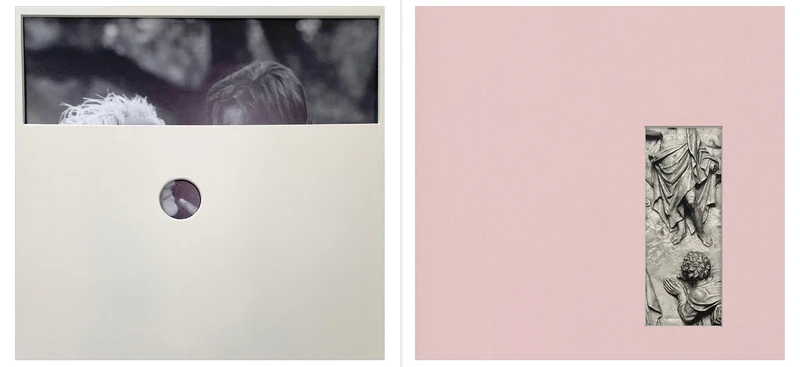The Nasty Book
17 Oct-10 Nov 2024
PV 17 Oct 2024, 6-8.30pm


The Nasty Book’ is the second interpretation of the exhibition ‘The Tempation of..’ which took place between August and September 2024 at THE SECOND ACT in London. Hosted and curated by Division of Labour, curator Nat Pitt looks at the commonalities in the work of Eli Craven and Lydia McCaig using the idea of libidinal economy by which the libido is a form of flowing energy through a system of drives; desire, erotism, sexuality, and death that are interlinked and intrinsic to neo-liberalism
ELI CRAVEN
'The term Soap Opera was coined in the US as early as 1934 where the main sponsors for daily serial melodramas on radio and TV were cleaning product and soap companies who identified ‘housewives’ as their biggest audiences.'
Soap Opera is an ongoing series by the artist Eli Craven, photographs are composed of still images from daytime soap operas transformed through the artist’s sculptural frames. The frames are painted with sensual soft colours or rendered in seductive hardwoods, they pull the viewer in with selective peepholes and mirrored metal panels that conceal and fragment situations between character actors, they intensify the spectacle and frustrate the drama of the scene.
There is an undeniable relationship between the subconscious choices in Craven’s artwork and the environment in which he was raised. In his childhood home, magazines and movies were censored, select films and TV shows were forbidden, sexuality and death were seldom discussed. The power images held were discovered through scrutinizing forbidden magazine collections, daytime soap operas, and movies. The impetus of his practice resides in the desire to see, only to discover nothing shocking. Instead, seemingly mundane imagery is isolated and fragmented, presenting a narrative exploring the inevitable, bizarre, and erotic nature of images.
“Ultimately the Soap Opera works manifest television fantasy into physical object in order to explore the act of looking and the desire to see what is hidden.” Eli Craven
LYDIA MCCAIG
'Indulgence was a Papal remission for the temporal punishment in purgatory, a payment in exchange for less time spent between heaven and earth. And where no indulgences were afforded the most committed dutiful slaves and surfs would exchange their labours, submission, and devotion in a long search for absolution. Later Chaucer wrote the Tale of the Pardoner about the swindle and unrestricted sales of indulgences as a widespread abuse during the later Middle Ages.'
McCaig returns to her formative years of exposure to the values of the Church, reflecting on how religious teachings on sex at an early age, ignited a personal tension between the indoctrination to resist temptation; and a natural curiosity to explore ‘sin.’ These lessons in morality created both a ‘Catholic Guilt’ and an obsessive interest in the hidden, the secret pursuits of desire and the body ultimately manifesting as a clandestine immersion into erotica and sex. In this work she uses found images of religious iconography and ecclesiastical spaces, as a device, representing this personal conflict. McCaig isolates her own sexualised gaze on the religious composition of these found images, seeking out the shrouded salacious acts hidden in plain sight.
The title of this exhibition is derived from the philosopher Jean-Francois Lyotard 1974 release of the book; Libidinal Economy, (Économie Libidinale’) In the text Lyotard distances himself from critical theory and to some degree Marxism to re-examine Freud’s earlier work on desire. Then, 14 years later he renounced this essay calling it the "livre méchant", or literally, the "nasty book"